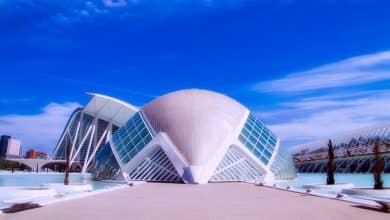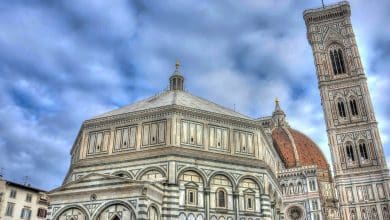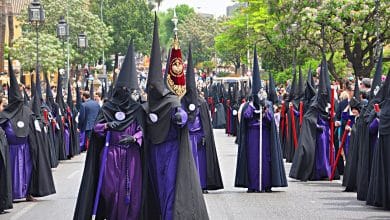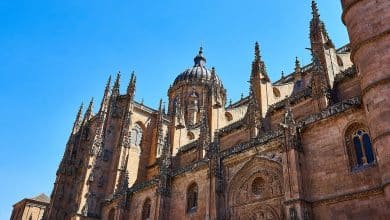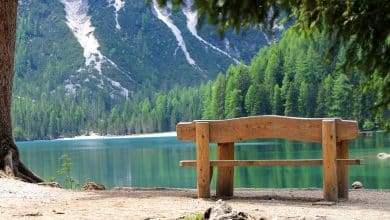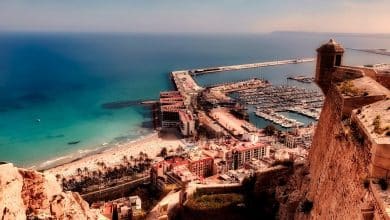San Lorenzo De El Escorial Attraction In Spain

At approximately 50 kilometers from Madrid, San Lorenzo de El Escorial is one of the most attractive tourist destinations in the Sierra de Guadarrama region. The Monastery and Real Sitio de San Lorenzo de El Escorial, named a UNESCO World Heritage Site in 1984, is its principal draw.
To honor his late father Charles V, Felipe II ordered the construction of the San Lorenzo de El Escorial Monastery in 1558 to serve as a family tomb and make up for the French battle that destroyed a nearby church dedicated to St. Lorenzo. Felipe II also wanted to solidify the Austrian throne in Spain.
The first stone was put on April 23, 1563, under the direction of Juan Bautista de Toledo. After his death in 1567, Juan de Herrera took over the project and put his own imprint on it, focusing more on the structure’s lines rather than the ornamentation that may otherwise detract from its aesthetic value.
Did you know Escorial is a massive complex of buildings?
The Escorial is a massive complex of buildings in central Spain’s San Lorenzo de El Escorial and one of the family tourist attractions in Spain, not far from Madrid. In terms of Renaissance architecture, it is the most significant. El Escorial’s construction began in 1563 and was completed in 1584. As a burial site for Charles V of the Holy Roman Empire, the edifice was also intended to be a monastery and a palace for King Philip II of the Holy Roman Empire.
Juan Bautista de Toledo, the building’s initial architect, based the ground plan on a gridiron pattern to honor the martyrdom of the building’s patron saint, San Lorenzo. Juan de Herrera took over the project after Toledo’s death. Although Sebastiano Serlio and Giacomo Barozzi da Vignola impacted Herrera’s work, the final product was distinctly Spanish. The four main floors of the complex, which is characterized by its angular lines, include huge towers at each corner. The buildings are arranged in a quadrangle and include:
There’s a church (1582), a monastery (1584), a royal palace (1584), and a college library (1584). (1592).
Many well-known 16th and 17th century Spanish and Italian painters contributed to the interior design of the Escorial. There were some of the first paintings painted there by Pellegrino Tibaldi and Federico Zuccaro. El Greco, Luca Giordano, and Claudio Coello, among others, painted for the Escorial. The building has a significant collection of Renaissance and Baroque paintings presented by the Crown, among other treasures.
El Escorial’s interior design
El Escorial’s interior design was meticulously synchronized with the building’s exterior design in order to produce a seamless visual impact. Basilica’s six Old Testament kings sculptures and San Lorenzo’s solemn presence on the main façade set the stage for an impressive exhibition of saints and kings inside. A clear aesthetic justification exists for limiting individual artistic expression at the Escorial, even though Philip was a demanding customer. If the project’s triumphal unity had to be fully expressed, the decoration had to be in line with the building’s somber, unornamented classicism.
Despite the fact that the town of San Lorenzo de El Escorial can trace its ancestry back to the Reconquista of the 11th century and the subsequent resettlement of the central plateau. Philip II ordered the construction of the San Lorenzo de El Escorial Monastery on property newly bought by the royal court in Madrid in 1561, and the little agricultural and cattle farming community remained isolated for generations until then.
Workers who arrived in a rural village to build a cathedral ushered in the development of merchants and artisans, an increase in population, and the construction of a new town hall and homes for aristocratic visitors, among other things. Two centuries later, Charles III handed the royal seal of approval to Juan de Esteban and Juan de Villanueva’s architectural plan for the new town.
San Lorenzo de El Escorial went into disrepair after the Royal Court abandoned it as an official residence during the French invasion in 1808. It was only in the middle of the century that El Escorial’s commercial and cultural vigor began to return when a new railway network was built and the Crown properties were sold, giving the bourgeoisie an opportunity to acquire property for hotels and vacation villas.
During Alfonso XIII’s reign, the town was converted into a major regional hub. For more than 100 years, San Lorenzo de El Escorial has served as a hub of higher education in the region thanks to its establishment of the Mara Cristina University, which is now known as the Real Centro Universitario El Escorial-Maria Cristina, and the colleges of La Inmaculada Concepción and Las Carmelitas de la Caridad. Since 1988, El Escorial has hosted its famed Summer Courses, attended by thousands of Spanish and international students each year, making it one of the most important universities in Spain.
It’s not just the monastery that’s worth seeing; it includes the Casa de Oficios, Casa de Infantes, and the King’s Stables, which were created for the Royal Family to store their horses and carriage during their trips. A tiny hunting pavilion in natural settings, the Casita del Infante was created for the brother of the future king and used as a platform for chamber recitals and court gatherings, and was erected by Juan de Villanueva for the Prince of Asturias, the future Carlos IV. Jaime Marquet, a French architect, created Charles III’s Royal Coliseum, which is a major cultural center in the region today and a major tourist attraction.
There is a popular meeting at the Hermitage of the Virgen de Gracia, a modest pine structure in a pine forest outside of the town’s old center at La Herreria. The Seat of Philip II, perched atop a nearby crag, is where the monarch is claimed to have kept tabs on the monastery’s growth.
The Benedictine Abbey of Santa Cruz del Valle de los Cados
The Benedictine Abbey of Santa Cruz del Valle de los Cados, located in the Sierra de Guadarrama, is only eight kilometers from El Escorial. Abbey and other structures like the library and inn are situated on 36,000 square meters of land, and there is a crypt cut into the rock and an enormous 150-meter high cross that may be approached through a concealed door. Inside the crypt sits the burial of José Antonio Primo de Rivera, as well as the graves of 40,000 Civil War troops who were kept secret from the public. As recently as 2019, this location was also home to the unearthed and relocated body of Francisco Franco, who was buried in El Pardo’s Valley of the Fallen.
The restaurant Montia
The restaurant Montia, which debuted in 2012, has a distinctive gourmet feature: it delivers special food made using locally sourced ingredients. Due to its natural bounty and enviable location, Sierra de Guadarrama produces a popular type of meat that many restaurants use as a main element in their meals.
With the Escorial’s architecture and sculptures in mind, Philip chose to contract as few painters as possible for the painted adornment, in order to maintain a consistent look. The Sanctuary of the basilica is the best place to see this ideal and its excellent implementation. Architecture, painting, and sculpture have never come together in Renaissance art in such a harmonious way, with every feature appearing to be an integral part of the whole. El Escorial was altered by subsequent kings, although it remains unified to this day. For centuries, Spanish kings’ remains were kept in the Royal Pantheon. It was finished by Philip IV in the 1700s. Due to fire and plunder, El Escorial has lost some of its artifacts, yet it remains the most spectacular Renaissance structure in Spain. Listed on the UNESCO World Heritage List, the Escorial is one of Spain’s most popular tourist attractions.
Bottom line
The Escorial is a massive complex of buildings in central Spain’s San Lorenzo de El Escorial. In terms of Renaissance architecture, it is the most significant. The complex was intended to be a burial site for Charles V of the Holy Roman Empire and a palace for King Philip II. The town of San Lorenzo de El Escorial can trace its ancestry back to the Reconquista of the 11th century. The building has a significant collection of Renaissance and Baroque paintings from the 16th and 17th centuries by well-known painters. The town of San Lorenzo de El Escorial has been a regional hub for more than 100 years.
Since 1988, it has hosted its famed Summer Courses, attended by thousands of students each year. The seat of Philip II is said to have kept tabs on the monastery’s growth. The Benedictine Abbey of Santa Cruz del Valle de los Cados is only eight kilometers from El Escorial. Sierra de Guadarrama produces a popular type of meat that many restaurants use as a main element in their meals. The restaurant Montia serves special food made using locally sourced ingredients.

